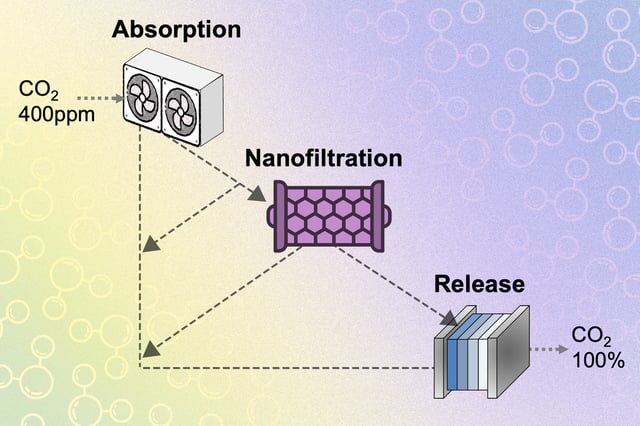Overview
- MIT researchers introduced a nanoscale membrane filtration system that decouples CO₂ absorption and release processes, addressing a longstanding efficiency tradeoff in carbon capture technology.
- The technology separates carbonate and hydroxide ions with approximately 95% efficiency, allowing each stage of the carbon capture cycle to operate at optimal conditions.
- This innovation improves electrochemical CO₂ capture and release efficiency sixfold while reducing capture costs from $600 to about $450 per ton, with further cost reductions projected.
- The modular system can be retrofitted into existing carbon capture installations and applied to both direct air capture and point-source emissions systems like power plants.
- The approach also enables the use of safer, less toxic absorbent chemistries, expanding sustainable options for carbon removal processes.
